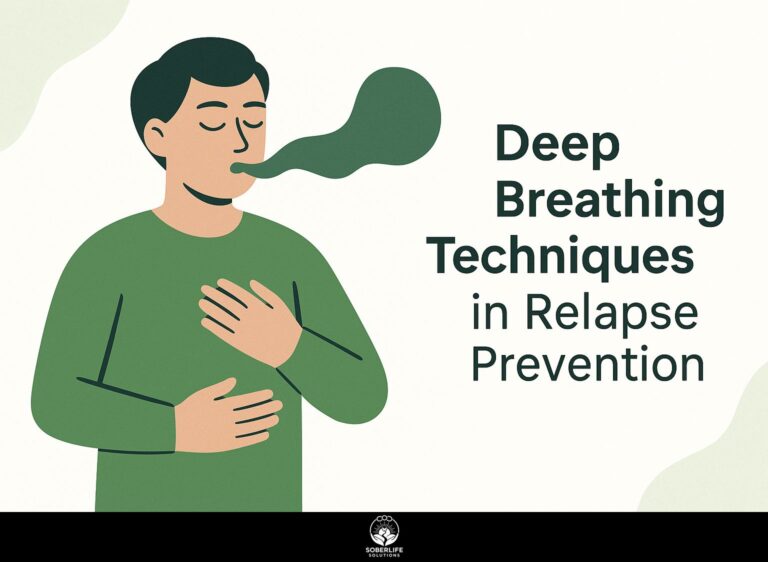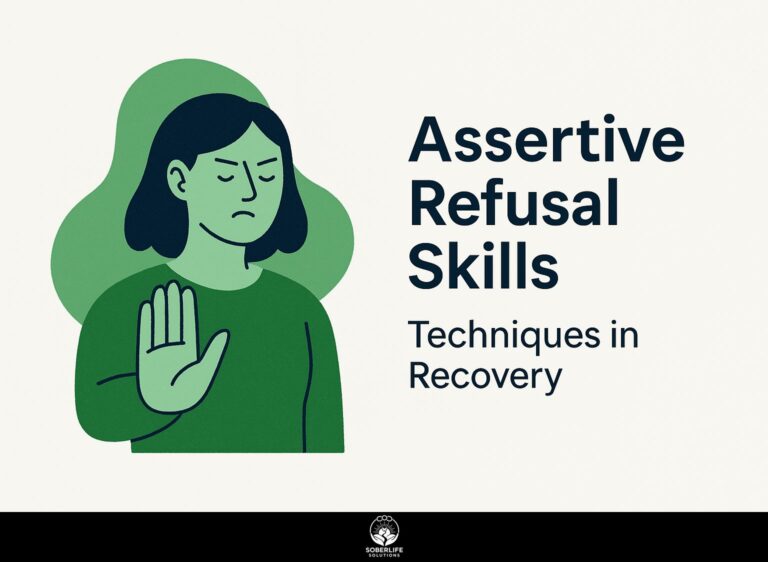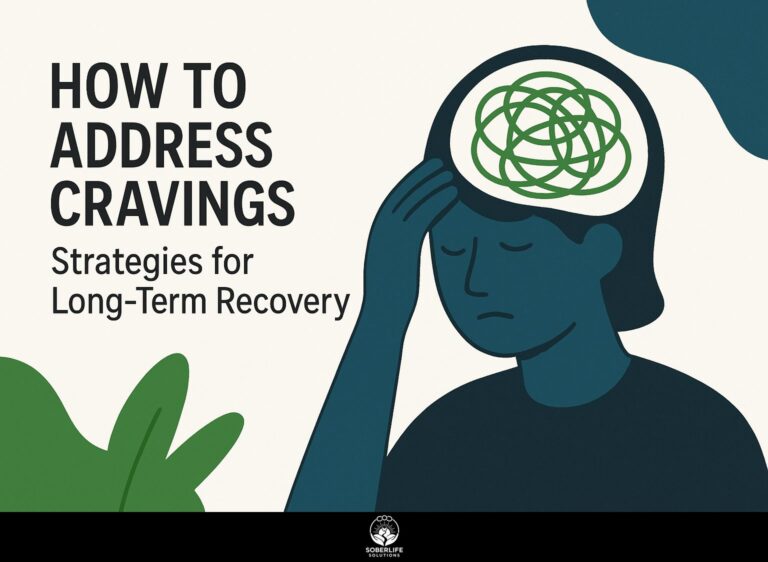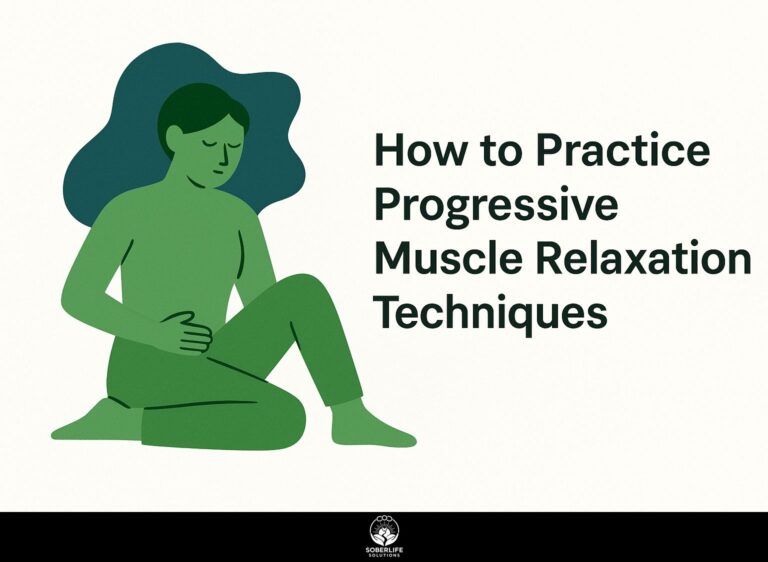Gestalt Therapy: Principles and Application in Relapse Prevention
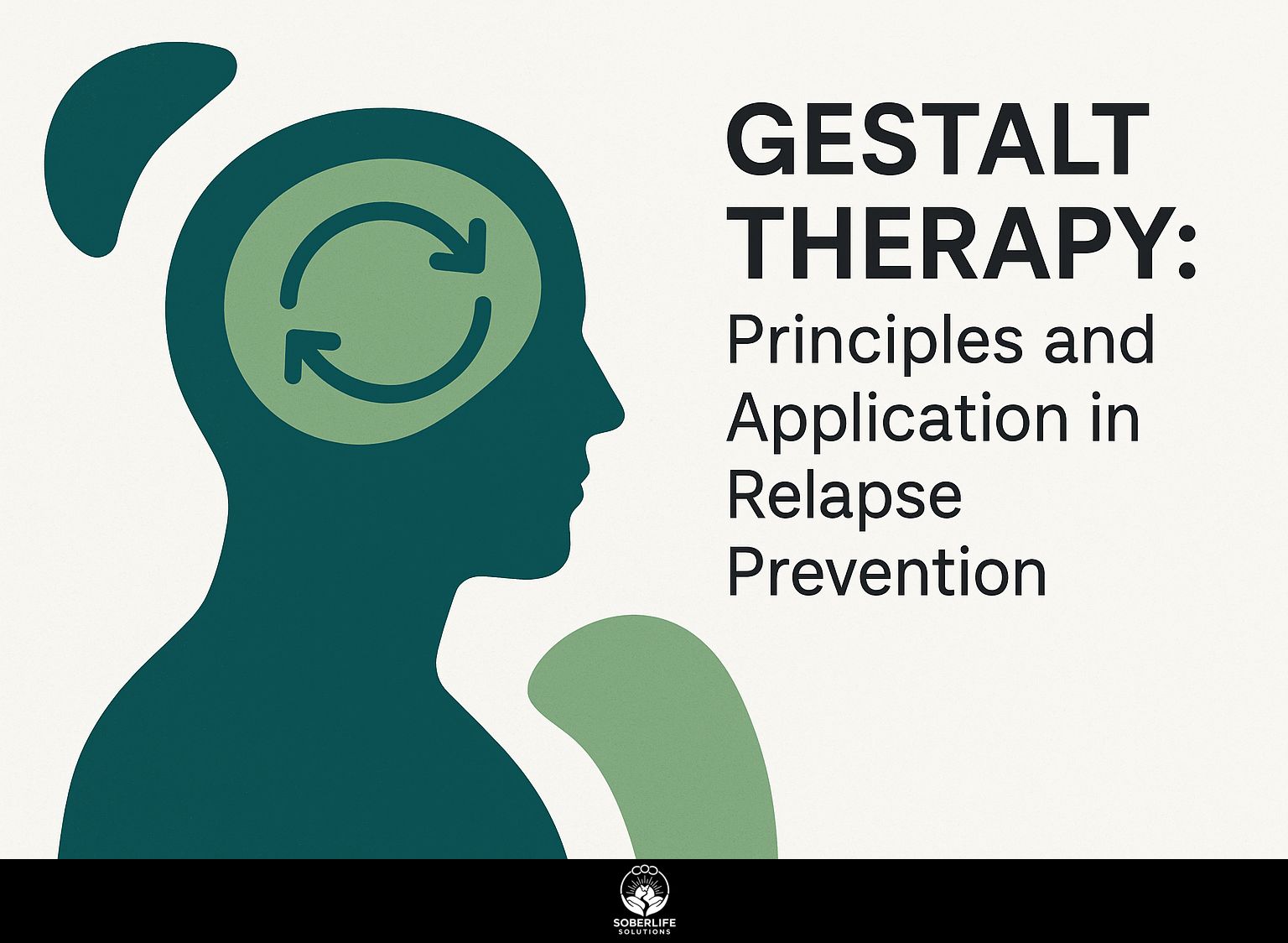
Using Gestalt therapy can greatly improve how you prevent relapse. Rooted in the work of Fritz and Laura Perls, this therapeutic method emphasizes self-awareness and personal responsibility in the present moment. By improving control over emotions, people can handle life’s difficulties more effectively. In this article, we will look at the main ideas of Gestalt therapy and how it can be used effectively, offering useful information for people looking to improve their recovery process.
Key Takeaways:
Historical Background
Founded by Fritz Perls and Laura Perls alongside Paul Goodman, Gestalt therapy emerged as a response to traditional psychotherapy, focusing on the whole person rather than fragmented parts.
Its roots lie in existentialism and phenomenology, emphasizing personal experience and the present moment. Important people like Fritz Perls brought in ideas like awareness, contact, and self-control, changing therapy from just looking at past traumas to dealing with present feelings. For those interested in a comprehensive overview, Wikipedia provides insight into existential phenomenology, which is foundational to understanding Gestalt therapy’s approach.
Gestalt therapy methods use the empty chair exercise, which helps clients express their thoughts, and role-playing to understand various viewpoints.
These new methods help people understand themselves better, letting them combine their experiences fully into their lives. This supports personal development and change.
Core Principles
Central to Gestalt therapy are principles such as awareness of the present moment and the significance of interpersonal relationships in the therapeutic dialogue.
These principles encourage individuals to engage fully with their emotions and experiences. For instance, the awareness principle invites clients to observe their thoughts and feelings in real time, promoting mindfulness.
Exploring interpersonal relationships helps clients recognize patterns in their interactions. Techniques like role-playing or empty chair dialogue are effective for enhancing self-awareness and emotional expression.
By helping clients learn about these patterns, therapists lead them to stronger relationships and better emotional well-being.
Key Concepts in Gestalt Therapy
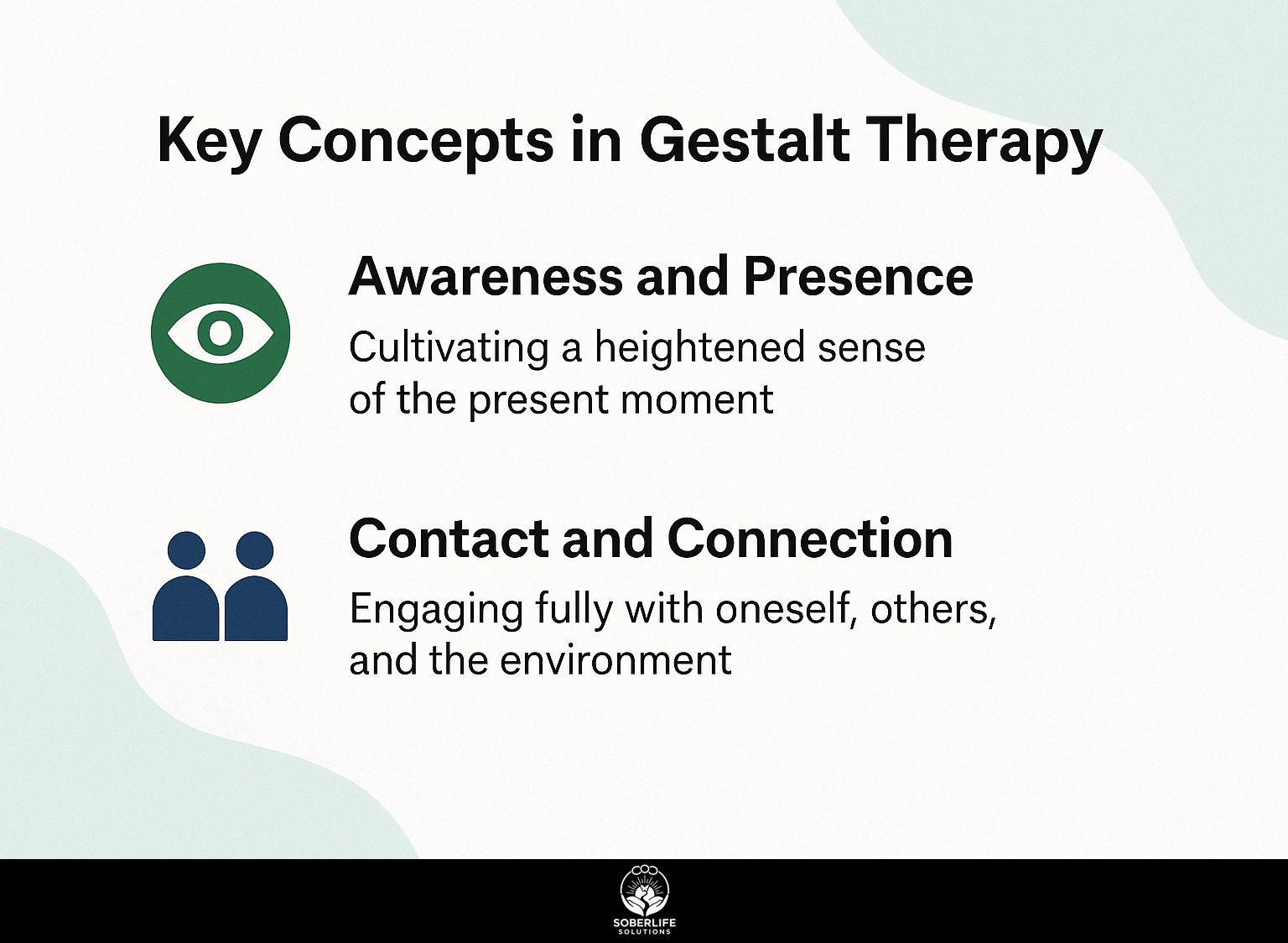
Gestalt therapy centers on important ideas that help individuals thoroughly examine their emotions and develop personally, considering the complete human experience.
Awareness and Presence
Being aware and attentive is important in Gestalt therapy. It helps people connect with their thoughts and emotions as they happen, which helps them manage their feelings better.
To grow awareness, try practices such as mindfulness meditation and exercises that focus on the senses. For instance, practicing five minutes of deep breathing focuses attention on the present, enhancing emotional clarity. For those looking to deepen their practice, UCLA Health offers a variety of guided meditations that can be a valuable resource.
Clients can participate in body scans, where they mentally focus on different parts of their body, helping them connect physical feelings with emotions. These practices gradually help clients recognize how they feel, resulting in better habits and more self-control in daily life.
Contact and Connection
Gestalt therapy emphasizes the importance of forming relationships and the therapist-client bond in helping individuals express their feelings and become more aware of themselves.
A solid relationship between a therapist and a client can greatly improve emotional expression by building trust and a sense of security. To establish this connection, therapists should actively practice active listening, maintaining eye contact, and reflecting back what clients share.
Encourage clients to express their emotions in real-time, possibly through activities like acting out scenarios or imagining situations, which can help improve clarity. Regular check-ins about the therapeutic relationship itself also promote openness, allowing clients to voice any discomfort or needs.
This ongoing conversation builds trust and helps clients become more involved in their emotional experiences.
Gestalt Therapy Techniques
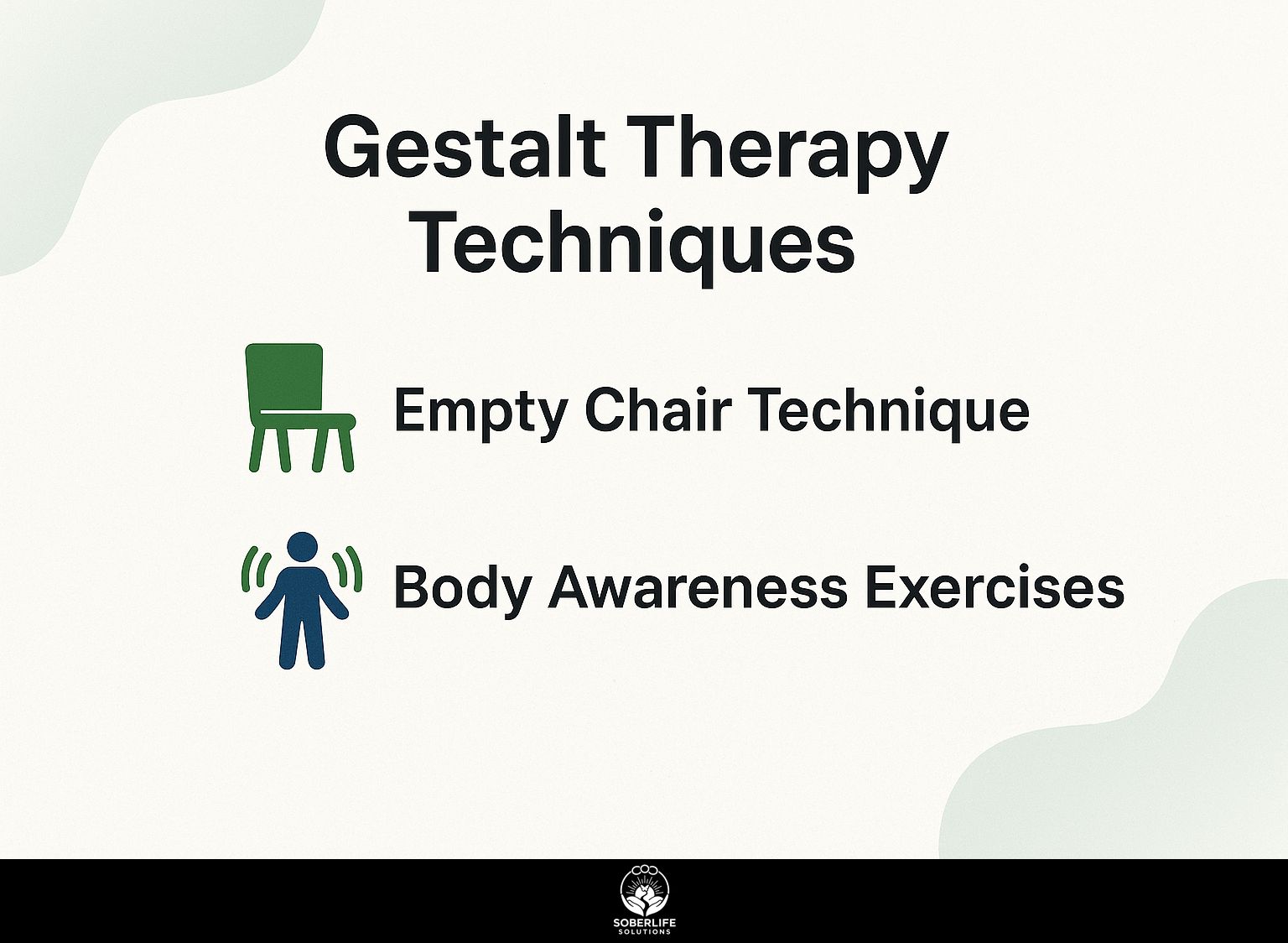
Gestalt therapy uses practical techniques that engage clients directly in their therapy, helping them learn more about themselves and develop personally.
Empty Chair Technique
The Empty Chair Technique invites clients to engage in role-playing, allowing them to confront unresolved issues by visualizing conversations with significant figures in their lives.
During sessions, a client might set an empty chair opposite them and imagine a deceased parent, for example. By expressing their feelings aloud, they often achieve clarity and emotional release.
A success story involves a client who, after years of guilt over an unresolved argument with their father, used the technique to articulate their regrets and feelings. This led to an important finding, allowing them to forgive themselves and find peace, proving the method works in handling complex emotions.
Body Awareness Exercises
Body awareness exercises in Gestalt therapy help clients connect with their physical feelings, which helps balance thoughts and emotions more effectively.
Therapists can implement specific exercises such as deep diaphragmatic breathing to promote relaxation and groundedness. This technique involves inhaling deeply through the nose, allowing the abdomen to expand, and exhaling slowly through the mouth.
Mindful movement practices like yoga or tai chi encourage a heightened awareness of bodily sensations. These practices help people understand their emotions better and let go of accumulated stress.
By combining breathing techniques with mindful movement, clients can better recognize their emotions and constructively address them.
Relapse Prevention Strategies
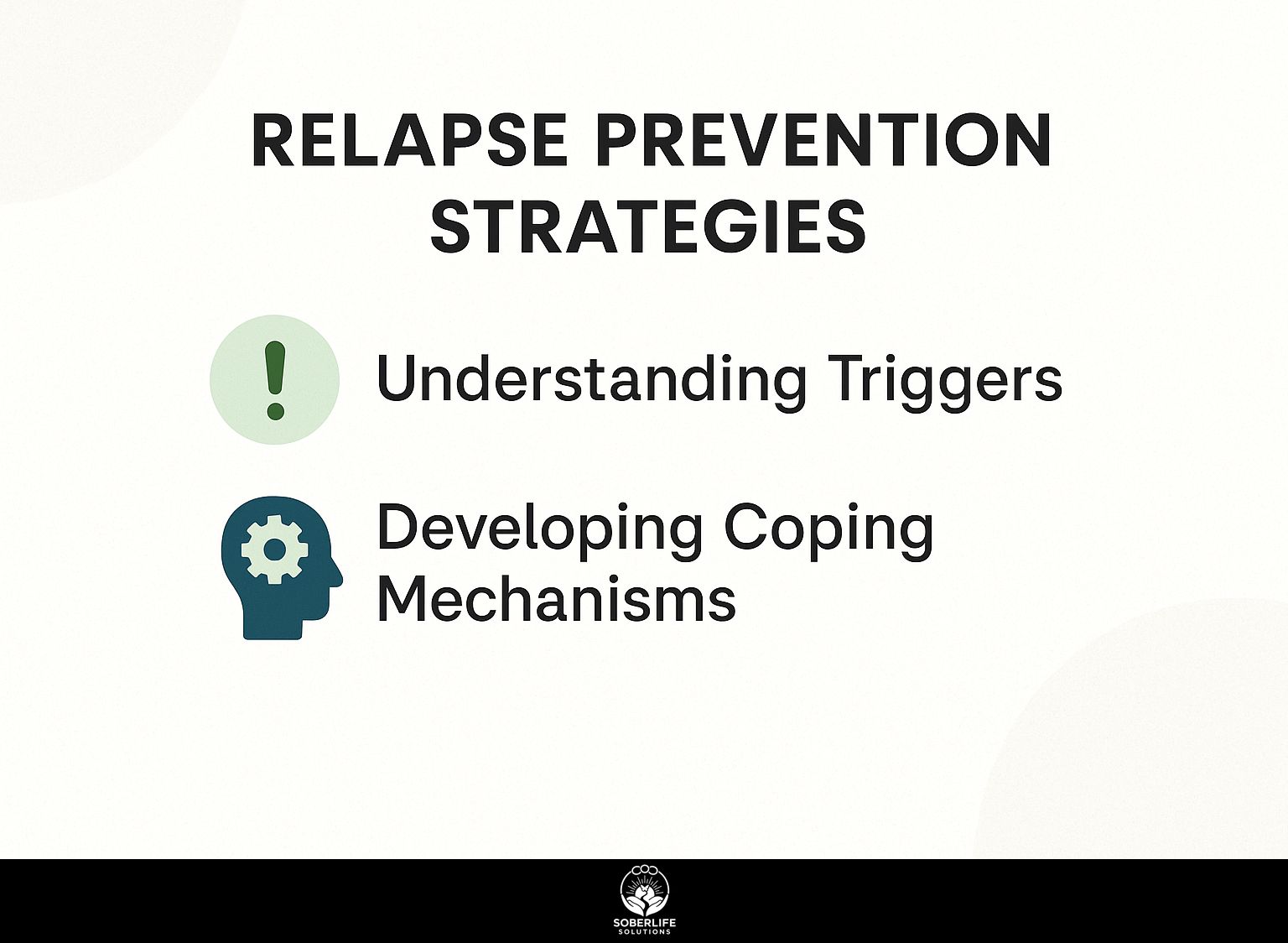
Relapse prevention in Gestalt therapy helps clients with practical tools to handle challenging situations effectively. To further enhance these strategies, consider exploring comprehensive relapse prevention techniques that integrate various therapeutic approaches.
Understanding Triggers
Finding and knowing what triggers are is important in stopping relapses. It helps clients notice patterns linked to bad feelings and problems that haven’t been dealt with.
Clients can use journaling to articulate their feelings and pinpoint specific triggers. For example, they might write about stressful situations or emotional responses that precede cravings.
Engaging in mindfulness exercises, such as deep breathing or meditation, helps increase self-awareness around these triggers. Bringing these methods together helps clients create their own plans to deal with difficult times. According to the Whole Health Library, reducing relapse risk involves integrating practices like mindfulness to enhance personal coping strategies (Reducing Relapse Risk).
For instance, if a client identifies that social gatherings trigger anxiety, they can plan ahead by practicing coping techniques or even limiting their exposure to such situations initially.
Developing Coping Mechanisms
Gestalt therapy helps people find ways to handle challenges better, leading to greater happiness and letting them share feelings in a healthy way.
Clients can use different strategies to handle difficult times successfully. Grounding techniques, such as focusing on the five senses, help anchor their thoughts in the present.
For example, they might identify five things they can see, four they can touch, three they can hear, two they can smell, and one they can taste.
Creative outlets like journaling or painting allow clients to express their feelings constructively. By regularly using these practices, clients can improve emotional control and encourage mindfulness in their daily lives.
Application of Gestalt Therapy in Relapse Prevention
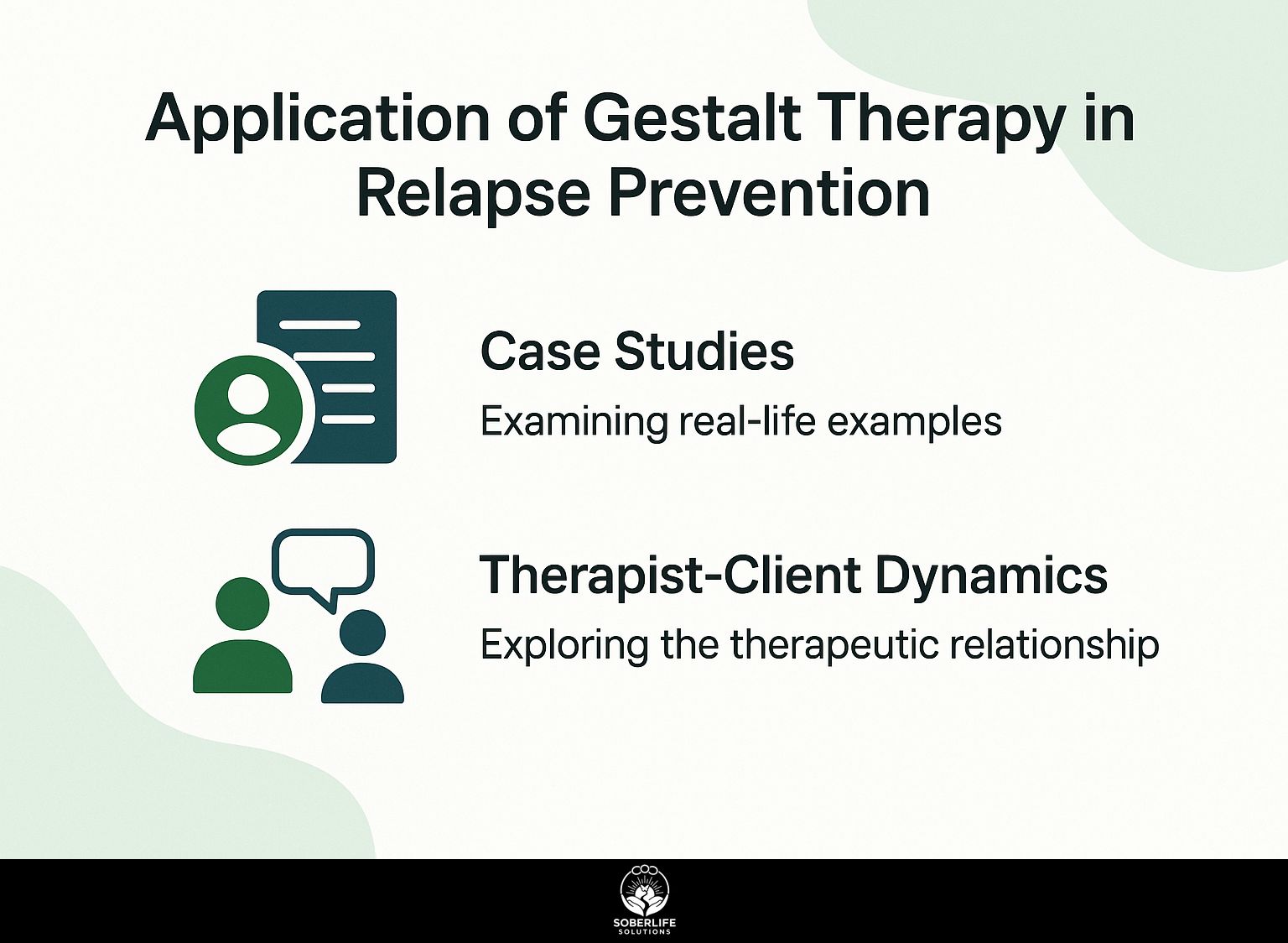
Using Gestalt therapy ideas in preventing relapses offers a strong method for handling the challenging aspects of overcoming addiction.
Case Studies
Looking at specific examples shows how Gestalt therapy has successfully helped clients overcome addiction by increasing their self-awareness and improving their emotional control.
One example is Sarah, who used Gestalt methods to look into unresolved issues from her past, which greatly reduced her cravings.
By engaging in role-playing exercises, she confronted unresolved emotional pain, resulting in improved self-acceptance.
Another case features Tom, who practiced mindful awareness during therapy sessions. This focus enabled him to recognize what causes his stress and manage it, leading to more than a year without alcohol.
Both clients noticed significant changes in their views, showing that Gestalt therapy works well for preventing relapses.
Therapist-Client Dynamics
In Gestalt therapy, the connection between the therapist and the client is important for examining emotions more thoroughly and gaining resilience during recovery.
Central to building this relationship are trust, open communication, and emotional safety.
Therapists can build trust by being regularly available and addressing client concerns, helping clients feel appreciated.
Open communication is achieved by encouraging clients to express their feelings freely. For example, a therapist might listen carefully to clients and repeat back what they say to make sure they understand each other.
Emotional safety happens by creating a place where clients can talk about their feelings freely without being judged. Such situations often result in significant advancements in therapy, improving the overall healing process.
Frequently Asked Questions
What is Gestalt Therapy and how is it applicable in Relapse Prevention?
Gestalt Therapy is a form of psychotherapy that focuses on the present moment and the individual’s experience and behavior. It is based on the belief that individuals are capable of self-regulation and have the necessary resources to solve their own problems. In Relapse Prevention, Gestalt Therapy helps people notice their thinking and actions, encouraging them to make positive changes to prevent relapse.
What are the key principles of Gestalt Therapy?
The key principles of Gestalt Therapy include the focus on present moment, awareness, personal responsibility, and the importance of the therapeutic relationship. Other principles include the emphasis on direct experience, the integration of mind and body, and the promotion of self-acceptance and growth.
How does Gestalt Therapy promote relapse prevention?
Gestalt Therapy promotes relapse prevention by helping individuals become more aware of their triggers and unhealthy thought patterns that can lead to relapse. Through the therapy process, individuals learn to take responsibility for their actions, develop better coping mechanisms, and make conscious choices that support their recovery.
Is Gestalt Therapy effective in preventing relapse?
Yes, Gestalt Therapy has been shown to be effective in preventing relapse. Studies have shown that individuals who participate in Gestalt Therapy have a lower risk of relapse compared to those who do not receive therapy. The principles of Gestalt Therapy, such as self-awareness and personal responsibility, are particularly helpful in relapse prevention.
Can Gestalt Therapy be used in conjunction with other forms of therapy?
Yes, Gestalt Therapy can be used in conjunction with other forms of therapy in relapse prevention. It can work alongside other treatments, like cognitive-behavioral therapy, by offering a well-rounded method to deal with root problems that might lead to relapse.
Can Gestalt Therapy help everyone avoid relapse?
Gestalt Therapy might not work for everyone in preventing relapse. It is important to work with a qualified therapist who can assess an individual’s specific needs and determine if Gestalt Therapy is the right approach for them. It might not work well for people with serious mental health problems or those who are not willing to accept responsibility for their actions.

